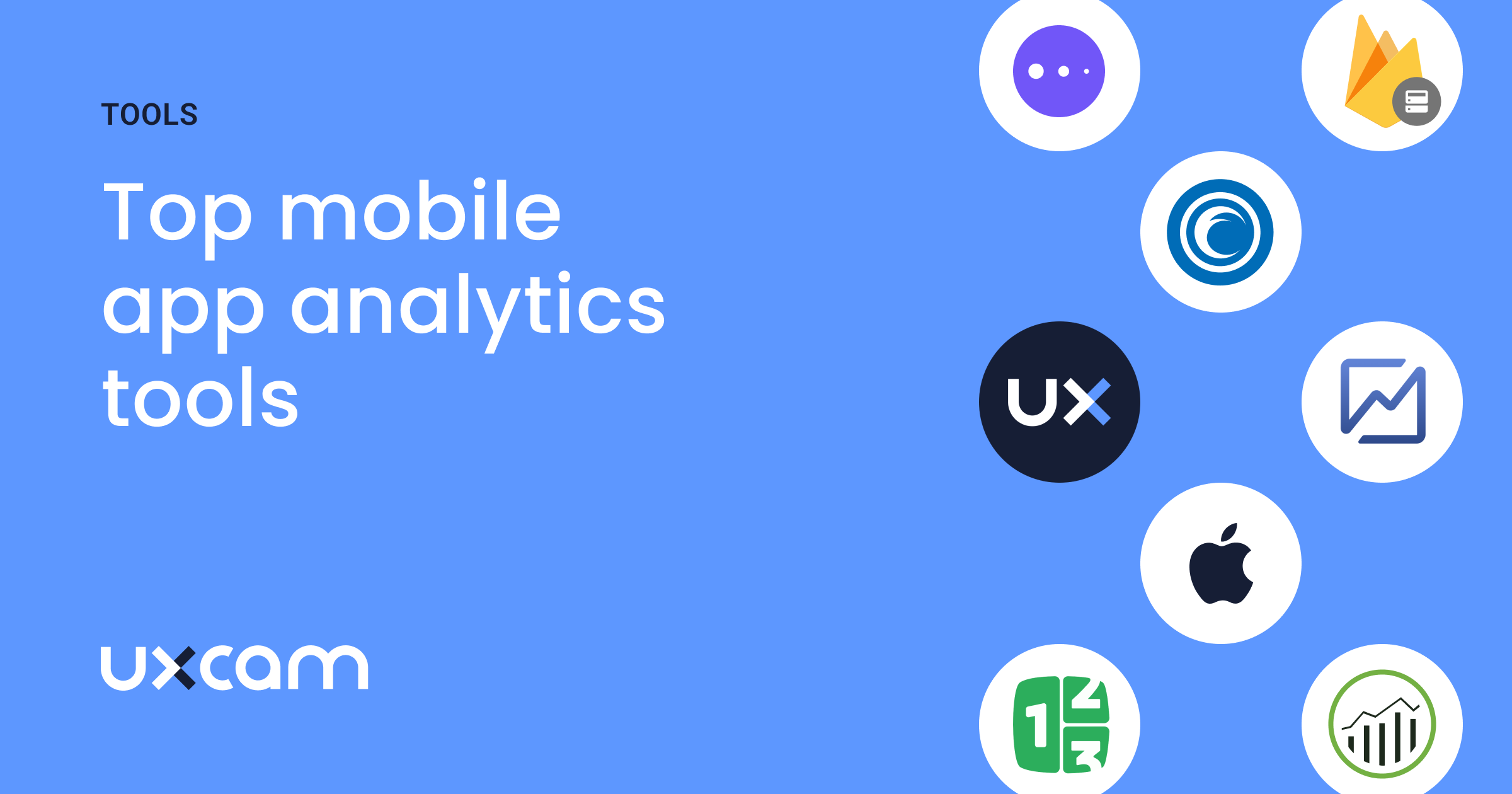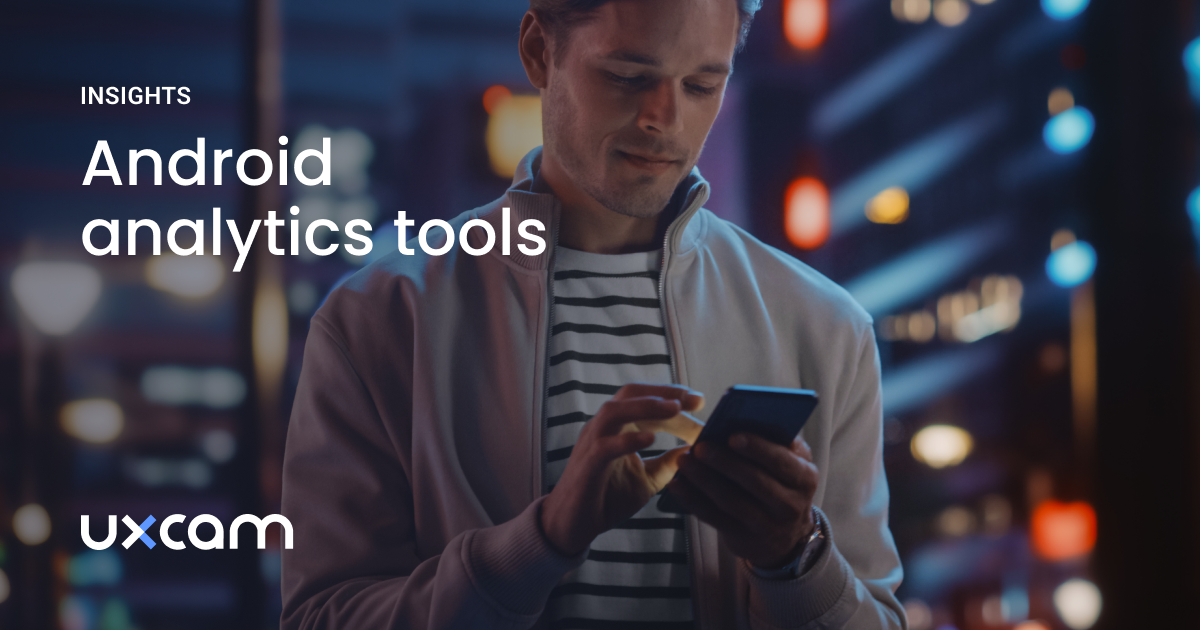Back to blog
13 MIN READ
Mobile App Tracking: Practical Guide & Best Tools [2026]
PUBLISHED
7 November, 2024
UPDATED
27 November, 2025

Product Analytics Expert

This article explores the best mobile app tracking tools, including UXCam, CleverTap, Firebase, Amplitude, Mixpanel and more. We’ll compare their key features, pricing and how each platform aligns with your app analytics needs to improve user engagement, retention, and conversions.
What is mobile app tracking?
Mobile app tracking allows you to monitor user behavior within your mobile app, uncover pain points, and optimize the overall user experience. Through advanced features like session replays, heatmaps, and event tracking, app tracking tools help you analyze which features users interact with most and identify areas where users drop off or experience friction.
Mobile user tracking is made possible by using a mobile analytics platform which typically records different types of user data, including but not limited to:
| User Information | Session information |
|---|---|
| Location | Session ID |
| Device information (mobile device, operating system) | Screen views |
| User ID | Gestures |
| Session replay | |
| Heatmaps | |
| Custom events |
By using mobile app tracking tools, you can:
Track user actions (e.g., clicks, swipes, app navigation)
Identify user frustration points (e.g., rage taps, crashes)
Optimize conversion rates (e.g., improving onboarding, feature adoption)
Gain insights to refine your product roadmap based on real user behavior
How does mobile app tracking work?
When getting started with mobile user behavior tracking, you need an app analytics solution that serves as a data processor. You have to integrate the SDK (Software Development Kit) of the mobile app analytics solution into your mobile app.
This mobile app tracking SDK collects user interaction data and sends it into your mobile app analytics solution, where it will be processed and converted into insights on a dashboard for your product team.
Your choice of SDK could make or break your mobile app. App performance issues are often directly caused by the SDKs you put in your app.
It’s critical to choose a low-risk and high-performance SDK because it has a direct impact on the end user’s experience of your app. A high-risk, poor-performing SDK can result in:
Slowing down your app
Bugs on the app
More crashes
Reduced functionality
This can lead to user churn and poor app reviews. If the SDK you’re using doesn’t follow the app store rules, your app could be removed from the app store.
Ultimately, a low-risk, high-performance SDK will positively impact your business metrics like user retention, acquisition, and revenue.
Best mobile app tracking tools
We searched for the best app tracking tools, and this is our selection of the best eight solutions.
Among these 8 tools, here are our top 3 picks:
UXCam – best for deep user behavior insights
Mixpanel – best for event-based analytics
AppsFlyer – best for marketing attribution
1. UXCam
UXCam is the leading mobile and web app analytics platform, combining qualitative insights (like session replays and heatmaps) with quantitative data (funnels, retention, and performance metrics). It gives product, design, and engineering teams a complete view of the user journey, helping them see not just what users do but why they do it.
With UXCam, you can visualize real user interactions, uncover friction points, and make data-driven product decisions without complex setup or manual tagging. Its autocapture technology records every gesture automatically, so teams can focus on insights instead of instrumentation.
UXCam stands out as the best app tracking tool for teams that want deep behavioral insights and seamless setup across both mobile and web.

Key features
Session replays: Watch real user sessions and visualize where users tap, scroll, and get stuck.
Funnel tracking: Identify drop-offs and measure which experiences drive engagement.
Tara AI assistant: Automatically detects friction points, summarizes trends, and suggests improvements.
Smart segmentation: Group users by behavior, device, OS, or app version for deeper insight.
Cross-platform analytics: Unified dashboards for iOS, Android, React Native, Flutter, Xamarin, and Web.
Event autocapture: Records every interaction automatically, no manual tagging or configuration required.
Crash analytics: Detect crashes, UI freezes, and rage taps with instant replay for debugging.
User journey analysis: Visualize complete user paths and identify friction points in real time.
Lightweight SDK: Optimized for performance, ensuring data capture doesn’t impact app speed.
Pricing
UXCam offers a free plan that includes up to 3,000 sessions per month. Paid plans are customized by session volume and features. Get a demo or start free trial.
Pros
Works across mobile, web, and hybrid frameworks for end-to-end visibility.
Autocapture eliminates manual setup and developer workload.
AI-powered insights make analysis faster and easier for non-technical teams.
Crash and issue tracking helps engineering teams resolve bugs quickly.
Flexible segmentation supports behavioral, technical, and demographic filters.
Lightweight SDK ensures high performance and low resource usage.
Cons
Free plan has limited session volume
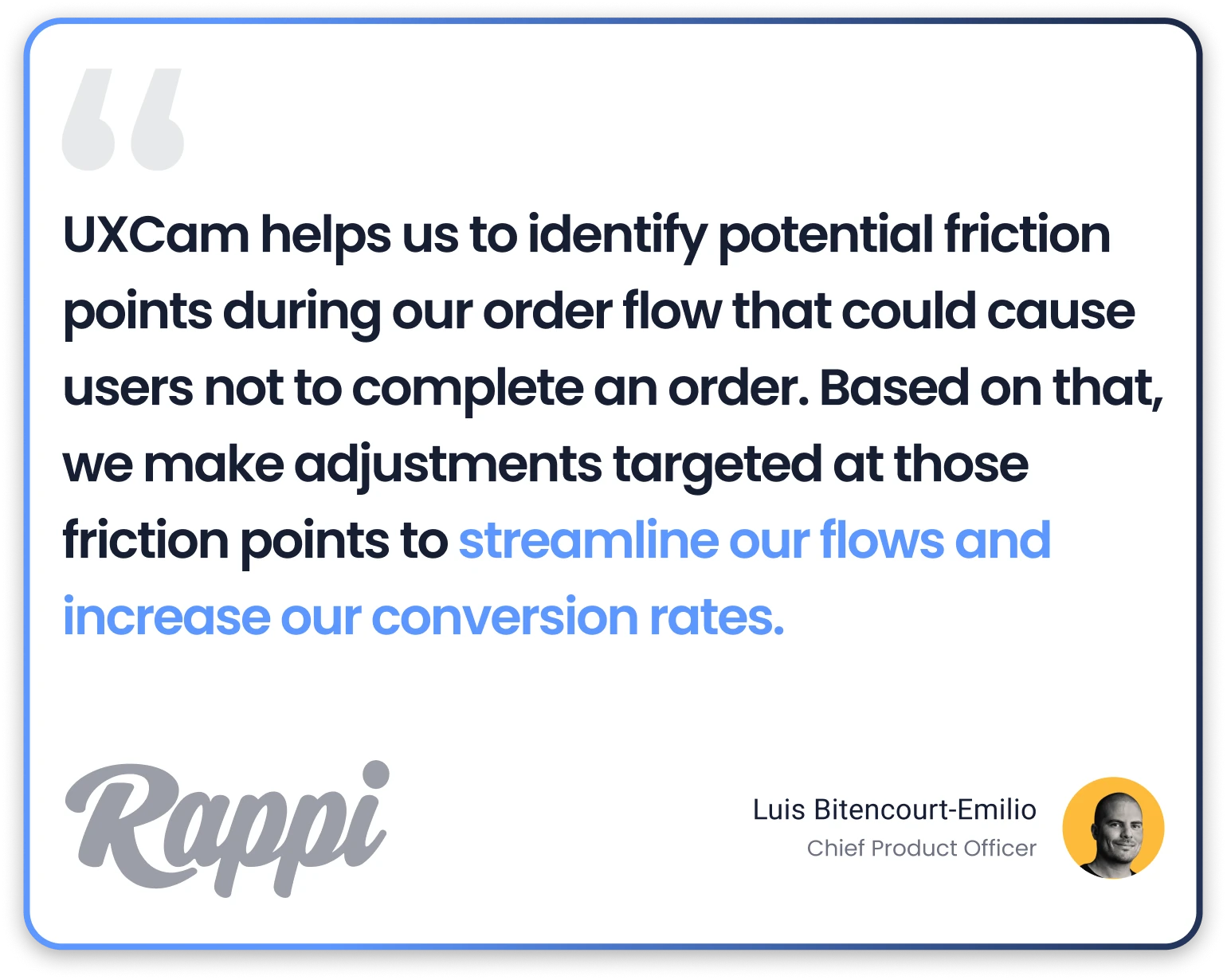
2. CleverTap
CleverTap is a customer engagement and retention platform that combines mobile analytics with powerful automation tools. It helps marketing and product teams understand user behavior, segment audiences, and deliver personalized messages that boost retention.
CleverTap is known for its focus on lifecycle management, helping brands measure, engage, and grow their user base through in-app campaigns, push notifications, and real-time segmentation. While it’s a strong solution for marketers, teams looking for deeper behavioral and UX insights often combine it with tools like UXCam for qualitative context.

Key features
User behavior analytics: Track engagement trends, session duration, and retention patterns across devices.
Lifecycle management: Automate onboarding, engagement, and reactivation campaigns based on user stage.
Advanced segmentation: Group users by recency, frequency, and monetization to tailor experiences.
Personalization engine: Deliver targeted push notifications, in-app messages, and email campaigns.
Funnels and cohorts: Analyze drop-offs and returning users over time to identify engagement drivers.
Pricing
Clever Tap offers three pricing tiers, Essential ($49/month for up to 5000 monthly active users (MAUs)), while Advanced and Cutting edge plans have custom pricing.
Pros
Excellent for retention and re-engagement campaigns at scale.
AI-powered segmentation helps predict user churn and growth opportunities.
Strong multichannel support (email, SMS, push, WhatsApp).
Built-in A/B testing and personalization tools for marketing teams.
Cons
Pricing structure can be complex
May require significant setup for advanced features
Lacks qualitative UX insights such as session replay or heatmaps.
3. Firebase Analytics
Firebase Analytics, also known as Google Analytics for Firebase, is a developer-focused analytics platform that helps teams track app performance, monitor user engagement, and measure campaign success. It’s tightly integrated with the Google ecosystem, making it a popular choice for app developers who also use tools like Google Ads, Play Console, or BigQuery. While Firebase offers strong event-based tracking and attribution reporting, it focuses more on quantitative data than on visual UX insights.

Key features
Event tracking: Monitor custom events such as app launches, purchases, and interactions.
Audience segmentation: Group users by behavior, device type, or geographic data.
Attribution tracking: Measure campaign performance across ad networks and channels.
Crash analytics: Track and fix crashes quickly with detailed error reports.
A/B testing: Run remote configuration tests to compare different app experiences.
Pricing
Firebase analytics is free to get started with, but it has a pay-as-you go option.
Pros
Free to use with robust tracking and integrations.
Strong data accuracy and scalability for developers.
Deep integration with Google Ads, Play Console, and BigQuery.
Ideal for startups and technical teams needing backend analytics.
Cons
Lacks qualitative UX insights like session replays or heatmaps.
Limited visualization options without external tools.
Advanced setup and analysis may require SQL or developer expertise.
4. Amplitude
Amplitude is a strong product analytics platform designed to help teams understand user behavior, track conversion paths, and make data-driven decisions. It specializes in quantitative behavioral analytics, offering deep insights into how users navigate your product and what drives engagement, retention, and revenue.
While Amplitude excels at numerical analysis, pairing it with a tool like UXCam helps visualize the why behind those metrics through session replay and heatmaps.
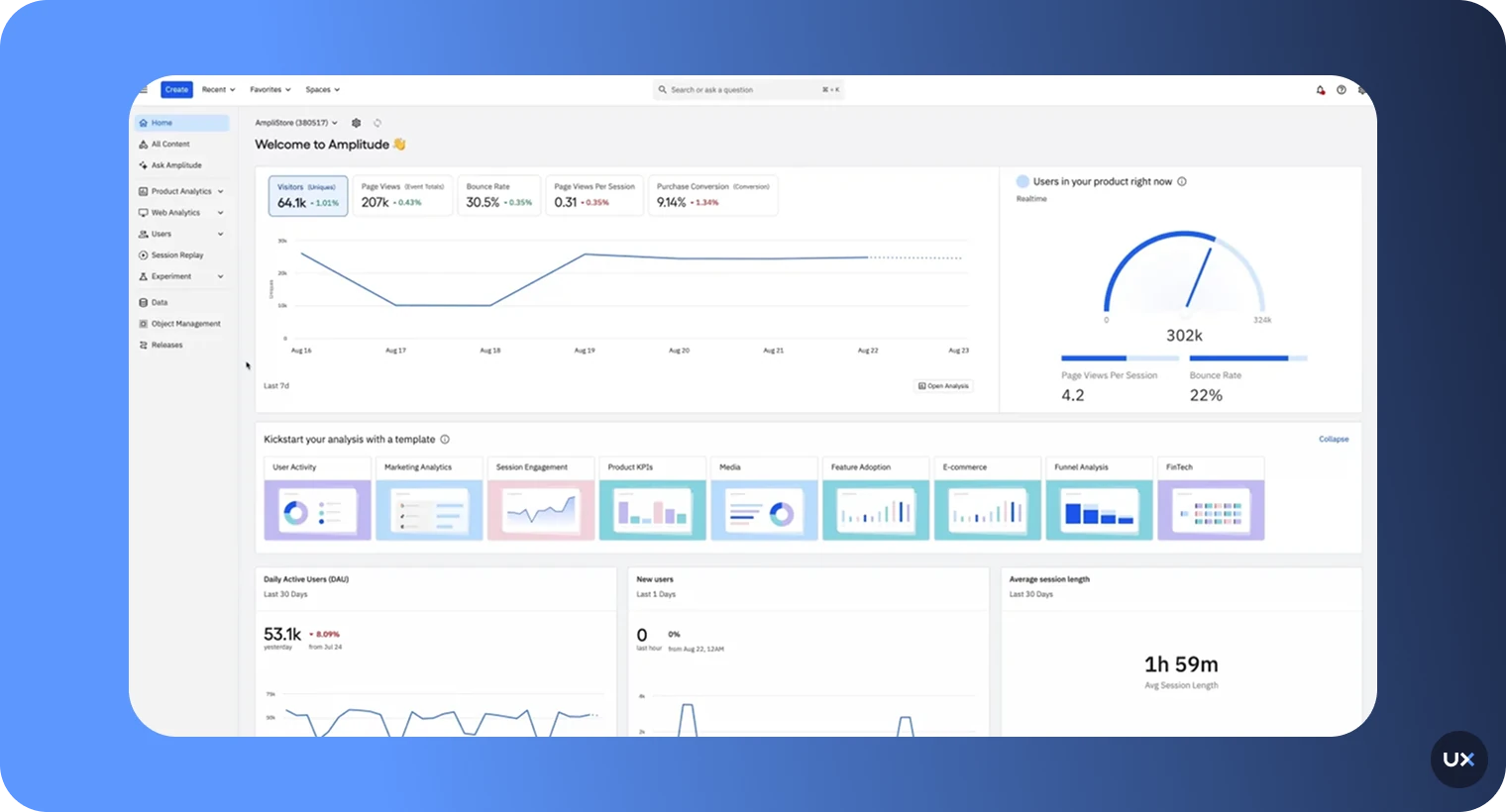
Key features
Behavioral analytics: Understand how users engage and move through your app.
Segmentation: Group users by demographics, behavior, or in-app actions.
Funnel analysis: Identify drop-off points and optimize conversion journeys.
Retention tracking: Measure long-term engagement and cohort behavior.
Predictive analytics: Forecast churn and conversion probability using machine learning.
Pricing
Amplitude offers a free plan with up to 10 million monthly events, while paid plans start at around $61 per month. Enterprise pricing is customized based on event volume, data needs, and advanced analytics features.
Pros
Advanced behavioral analytics and segmentation capabilities.
Strong funnel and retention analysis for optimizing user journeys.
Predictive analytics for churn and conversion forecasting.
Scalable and integrates well with data warehouses.
Cons
Requires manual event setup and tagging.
Premium features come at a high price point.
Initial configuration can be complex for beginners.
5. Mixpanel
Mixpanel is one of the most popular event-based analytics platforms for mobile and web apps. It helps product teams track user interactions in real time, analyze behavior across segments, and measure retention, engagement, and conversions without heavy SQL work.
Mixpanel’s strength lies in its flexible data exploration and segmentation tools, which allow teams to visualize user journeys, identify drop-offs, and optimize features that drive growth.

Key features
Event tracking: Capture custom user interactions for detailed analysis.
Segmentation: Filter and group users by demographics, device, or behavior.
Funnel analysis: Identify friction points in key user flows.
Retention reporting: Measure how often users return and re-engage.
Cohort analysis: Build dynamic user groups for targeted insights.
Pricing
Mixpanel offers a free plan with core analytics and data history, plus its Growth plan that starts at $0.28 per 1k events, and Enterprise tiers with advanced features, larger data limits, and custom pricing options.
Pros
Powerful segmentation and funnel analysis.
Real-time data tracking and visualization.
Scalable event-based model suitable for large datasets.
Advanced data modeling and custom formulas for deeper analysis.
Cons
Manual event setup can be time-consuming.
Complex for beginners without analytics experience.
Limited historical data retention on lower plans.
6. Apple Analytics
Apple Analytics is a built-in analytics tool for iOS and tvOS apps, available through App Store Connect. It provides app developers with performance, engagement, and marketing insights, without requiring SDK integration or manual setup. Because it uses verified App Store data, metrics are accurate, privacy-compliant, and automatically tracked from install to in-app activity.
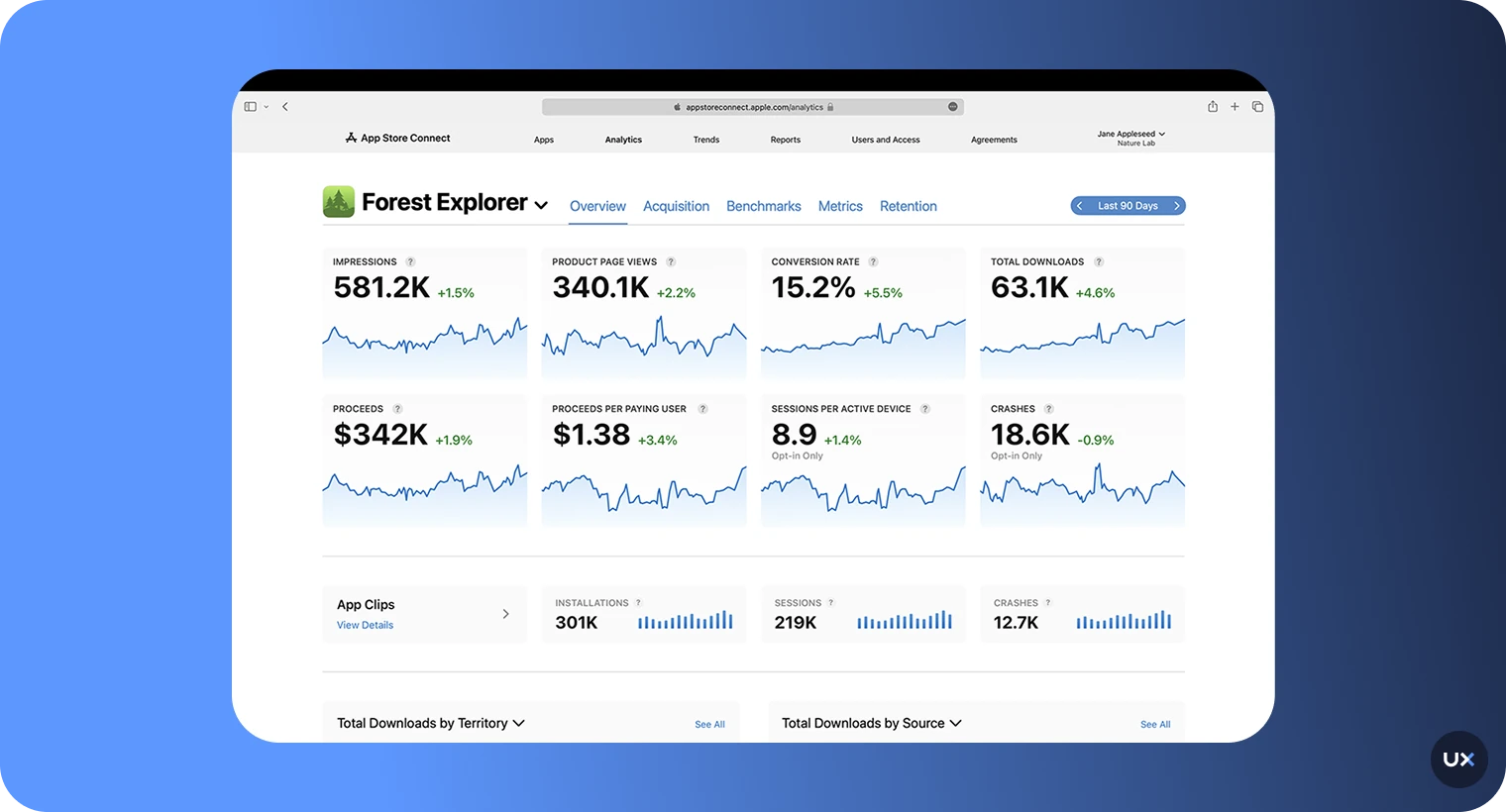
Key features
App Store performance tracking: Measure product page views, downloads, and conversion rates.
Engagement metrics: Track sessions, active devices, and retention rates automatically.
Campaign attribution: Evaluate marketing campaign performance across channels.
Sales and revenue reporting: Analyze in-app purchases and subscription trends.
No setup required: Automatically enabled via App Store Connect, no SDK needed.
Pricing
Apple App Analytics is completely free for developers enrolled in the Apple Developer Program, with no hidden costs or limits on tracked metrics.
Pros
Free and fully integrated with App Store Connect.
No SDK or technical setup required.
Accurate, first-party data directly from Apple.
Useful for measuring marketing and acquisition performance.
Cons
Available only for iOS and tvOS (no Android support).
Limited to basic metrics, no custom event tracking.
Not ideal for cross-platform or in-depth product analysis.
7. App Radar
App Radar is an app marketing and analytics platform designed to boost app visibility and optimize user acquisition. It combines App Store Optimization (ASO) tools with performance analytics, enabling teams to track rankings, measure installs, and improve conversion rates from app store listings.
Unlike traditional analytics tools focused on in-app behavior, App Radar specializes in helping developers and marketers analyze and grow app store performance.

Key features
Keyword research & tracking: Discover and monitor high-performing keywords for ASO.
App Store performance metrics: Track impressions, downloads, and conversion trends.
Review and rating management: Analyze and respond to user feedback across app stores.
Competitor analysis: Benchmark app visibility and keyword performance against competitors.
AI optimization suggestions: Get automated recommendations to improve store listings.
Pricing
App Radar offers a free trial, with paid plans starting at €69 per month for up to two apps. Higher-tier plans include more tracked keywords, competitor analysis, and collaboration features.
Pros
Excellent for boosting visibility and keyword rankings.
AI-powered optimization helps automate ASO decisions.
Strong review and rating management tools.
Good value for smaller teams and indie developers.
Cons
Lacks deep behavioral analytics or session tracking.
Limited customization in reports.
Focused on pre-install performance, not post-install engagement.
8. AppsFlyer
AppsFlyer is a mobile attribution and analytics platform that helps marketers measure campaign performance, optimize user acquisition, and prevent ad fraud. It connects marketing data across channels to give you a unified view of where installs, conversions, and high-value users come from.
AppsFlyer stands out for its multi-touch attribution and fraud prevention capabilities, making it a top choice for marketing and growth teams.
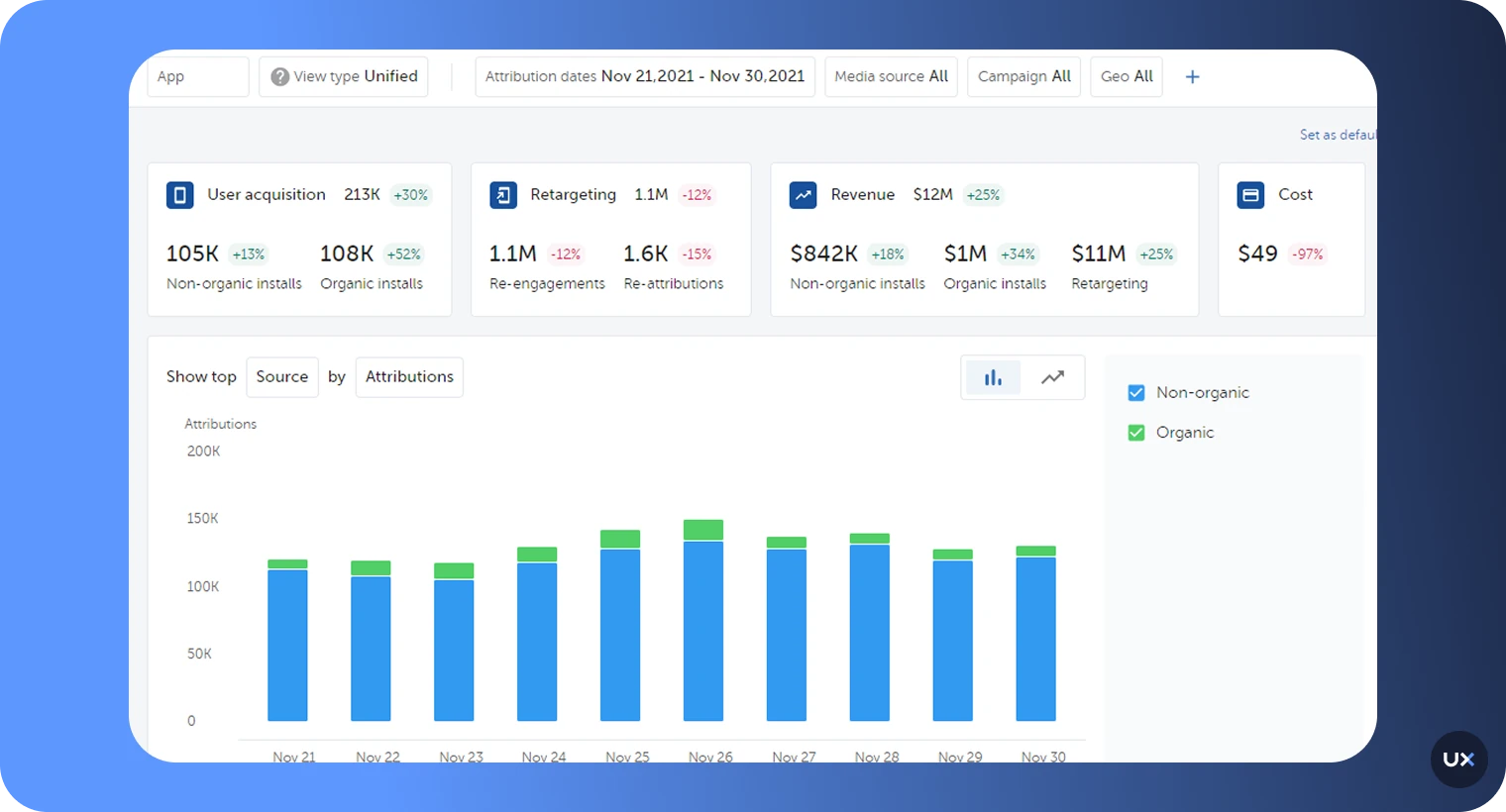
Key features
Mobile attribution: Identify which marketing channels and campaigns drive installs and conversions.
Multi-touch attribution: Track the complete customer journey across all touchpoints.
Fraud prevention: Detect and block invalid installs or engagement in real time.
Audience segmentation: Group users by acquisition source, demographics, or behavior.
ROI and LTV reporting: Measure user lifetime value and campaign effectiveness.
Pricing
AppsFlyer offers a free plan and a pay-as-you-go model, with custom enterprise plans available for larger apps and agencies
Pros
Accurate cross-channel attribution and conversion tracking.
Real-time reporting for faster campaign optimization.
Robust fraud detection and prevention tools.
Integrates easily with major ad platforms and CRMs.
Cons
Focused mainly on marketing analytics, not in-app behavior.
Pricing can increase quickly with high conversion volumes.
Requires setup and ongoing management for best results.
How to track user activity and behavior in mobile apps
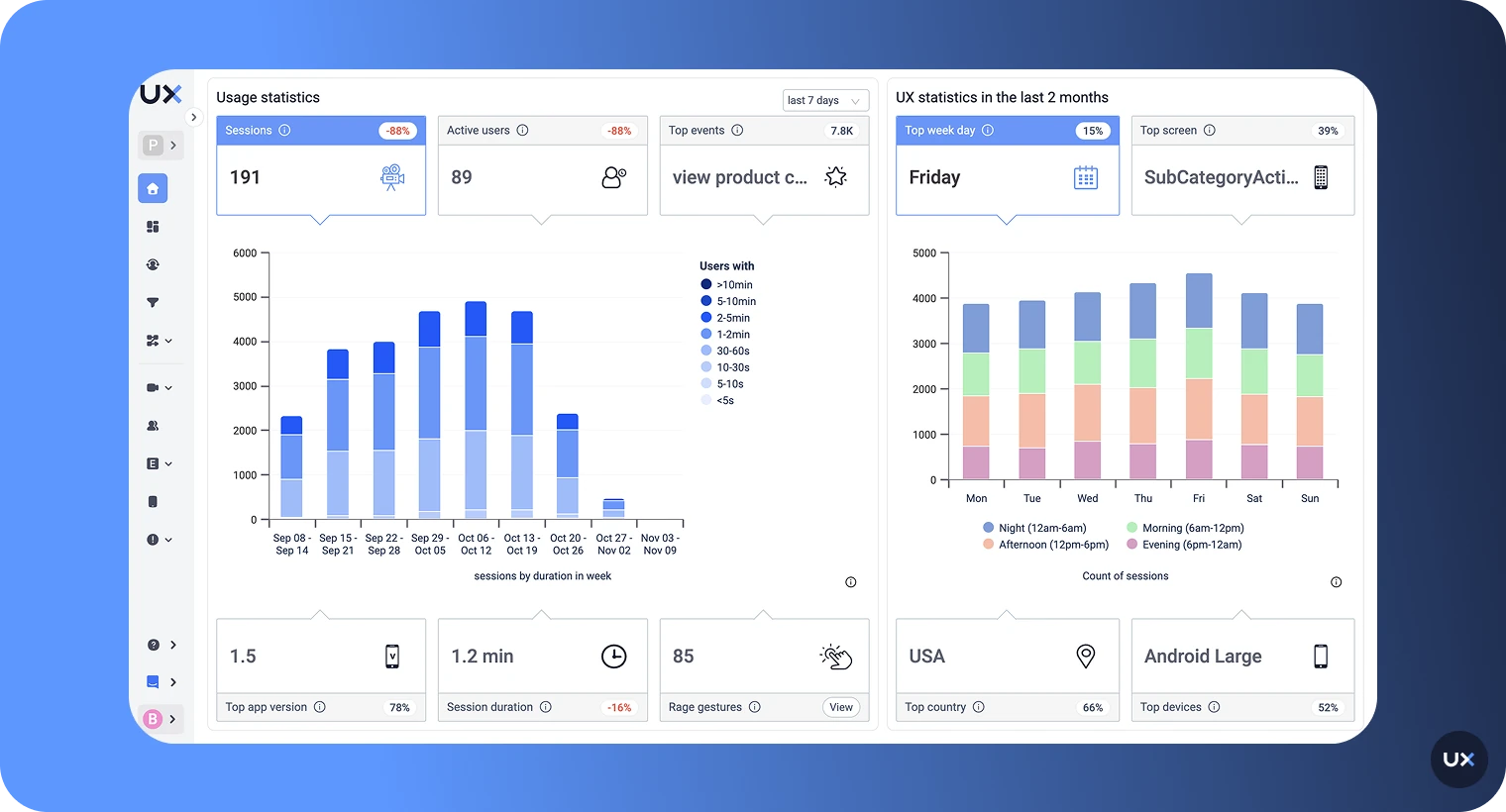
Before you start setting up tracking on your mobile app to gain insights into your user's behavior, you first need to understand what to track, when, and why. It’s easy to conclude that you need to track every little detail, however, that’s not always necessary.
Tracking is only as good as when the purpose behind it is well-informed. Outlined below are practical steps to set up effective user tracking in your mobile app.
Define your goals and key metrics
Defining SMART goals that you want to achieve for your product will help you identify the key metrics you should track to measure the success of your app.
Having clear goals helps determine what user events or properties you should send to your mobile app analytics tools to gather valuable insights and measure these objectives.
A good starting point is having an honest conversation with your team and yourself to figure out what questions about your users you are seeking data-driven answers for.
For example, let's assume you manage a cinema app; you may wonder how many users bought a ticket to watch a movie and why users aren't adding extras (popcorn or drinks) to their purchase.
Based on these questions, you could define the following goals for your app:
Increase customer retention by 30%
Discover what the key features are that have a higher impact on retention
Understand the difference in the user journey between one-time and returning users
Analyze the user experience and uncover friction points and roadblocks in the customer journey to improve your product
Then, these goals would determine why you should be tracking the following key metrics below:
Number of Active users (Daily, Weekly, and Monthly)
Most commonly used features among returning users
Screen exit rates
Drop-off percentage for the purchase process
Percentage of rage taps
Plan your events and properties
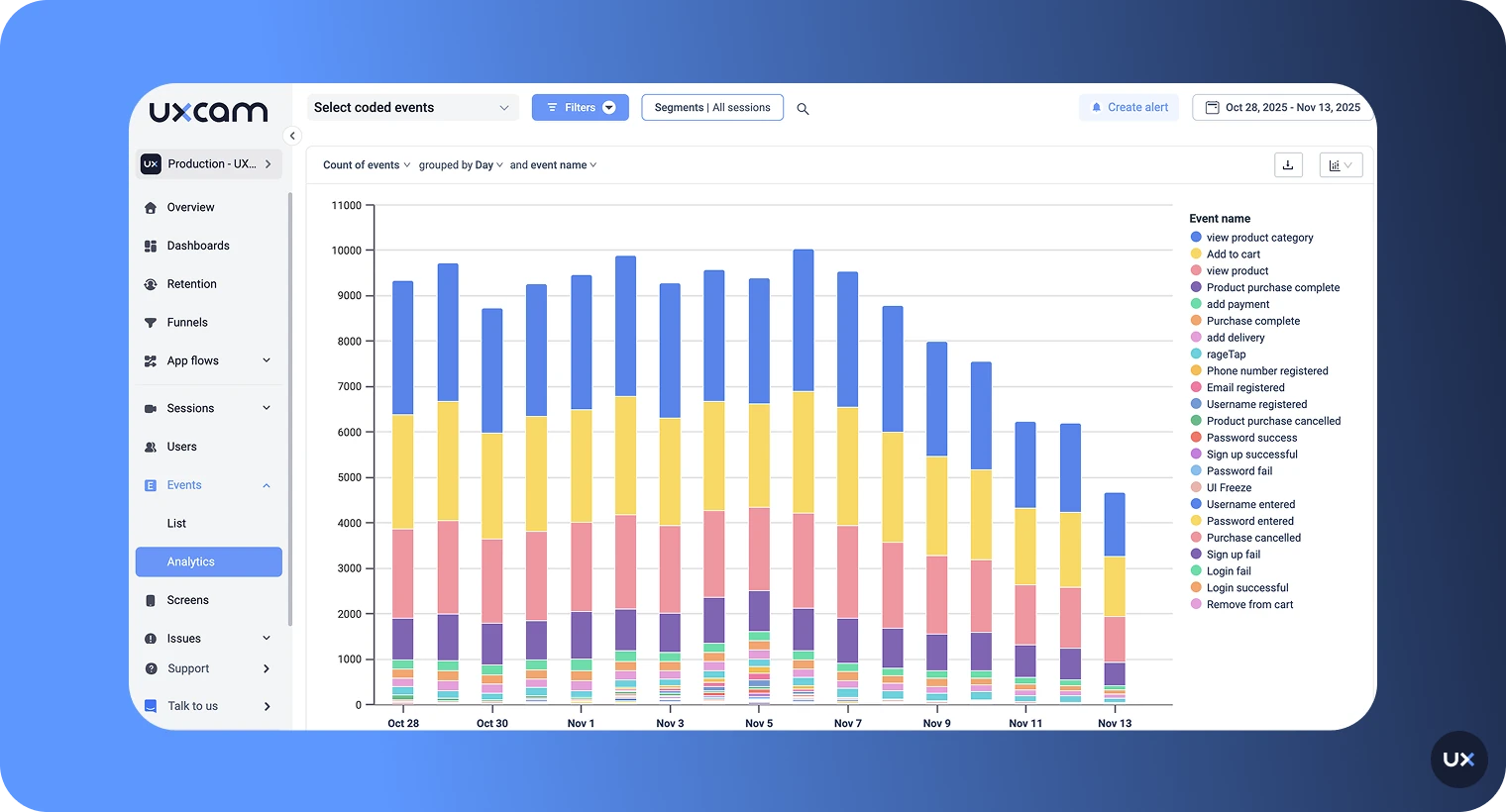
To gain better insights into your users’ interactions with your application, you have to send the right events and properties to your app analytics platform.
An event can indicate any interaction that occurs between the user and your application. It can be an action that the user performs (e.g., tapping a button, swiping between screens) or a specific event (e.g., an error message displayed).
While a property is an attachment to an event that provides additional context and allows you to dig deeper into the interaction.
Using the example of the cinema app, you may have the event "add to cart". This event can have the properties: movie name, movie category, movie time, selected theater, ticket price, and the number of tickets.
Planning your mobile app event tracking and aligning them with your goals and metrics will help identify the most important events with properties to send to your analytics tool.
Your choice of mobile app tracking tool could help speed up and organize the process. For example, a mobile app analytics solution like UXCam automatically detects;
Screens visited
Gestures of the user (taps, double taps, swipes, etc)
Rage taps: to show user frustration
UI Freezes: when the screen freezes
Map your user's journey with screen flow and screen burst
With the proper tracking setup and user behavior data flowing to your analytics tool, screen flow and screen burst map your user's journey and help you visualize at a glance the most common paths your users take when using your app. You can use this functionality to:
Identify differences in the navigation behavior between user segments
Discover alternative paths that users follow to achieve a certain goal in your app
Analyze sessions from users navigating through a sequence of screens
See how users behave with session recordings and replay
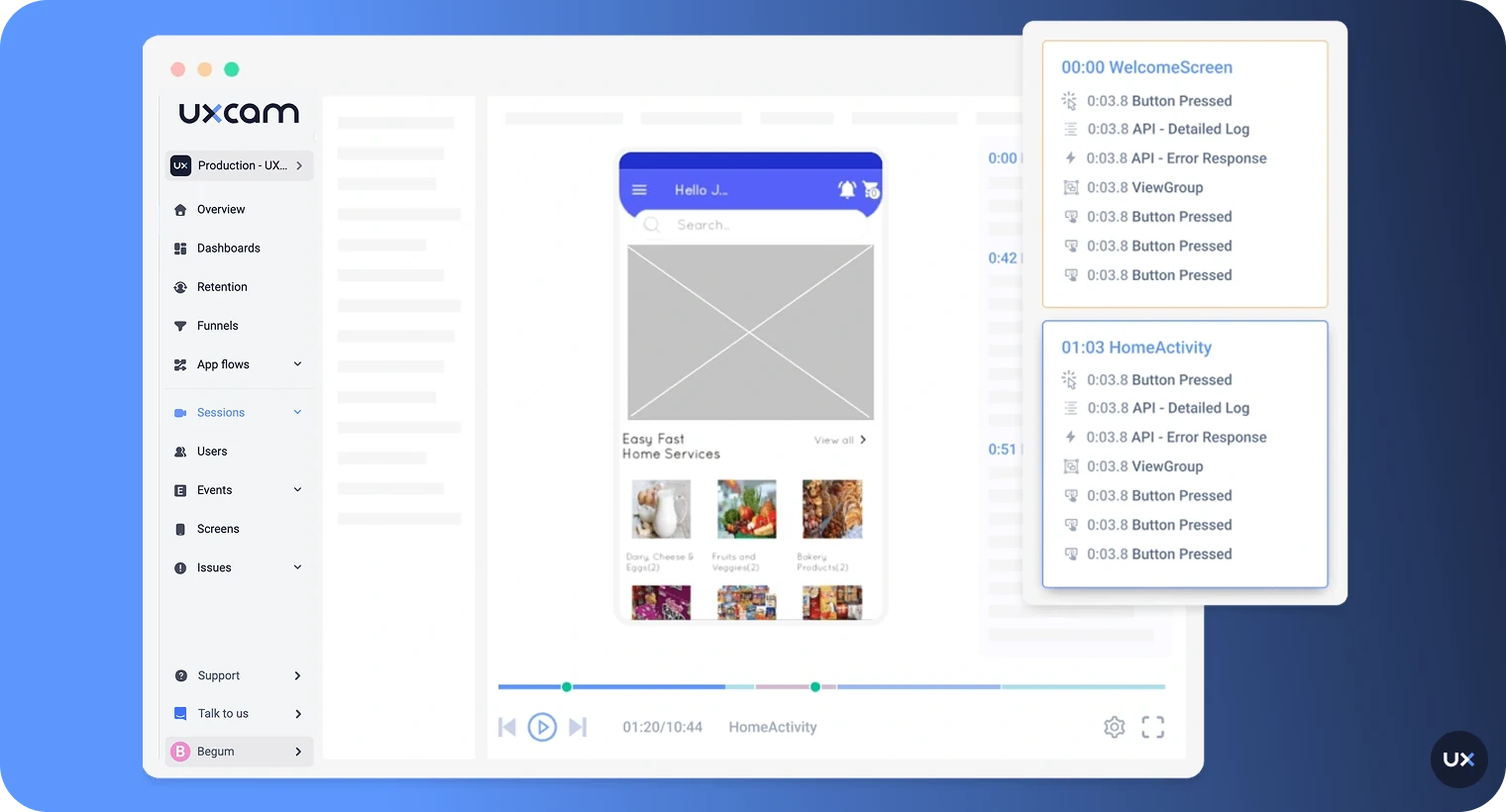
Mobile app session recording and replay give direct insights into your users’ behavior. This includes every interaction with the app, user input, and screen output.
It allows you to combine qualitative insights from session replays with quantitative insights from the events and properties you are tracking to understand the entire context behind every user interaction.
Session recording helps you see how your users interact with your app in a real-life scenario and visualize how your app looks on different devices, making it easy to know whether or not your app displays and functions correctly. You can use session replays to;
Identify bugs and user frustration patterns and reproduce them
Analyze your users’ journey and how they navigate through your app to improve user onboarding
Focus on what matters by filtering your sessions based on length, triggered events, rage taps, crashes, UI freezes, and other properties
Track where users click and scroll with touch heatmaps
The easiest way to track and visualize where users click, tap, and scroll on different screens in your mobile app is to use touch heatmaps, a visual overlay in an array of colors to represent user interactions.
Touch heatmaps allow you to see what your users are doing and how they interact with each screen in your mobile app. You can use mobile heatmap analytics to;
Find the most visited screens or those with greater user interaction or engagement
Discover the screens with the highest percentage of UI freezes and crashes
Spot the screens with the highest quit rate, and watch the session replays to understand the reasons behind those metrics
Easily identify screens that cause users the most frustration by sorting them by rage taps count or unresponsive gestures. Then, visualize those frustrations with the screen recordings
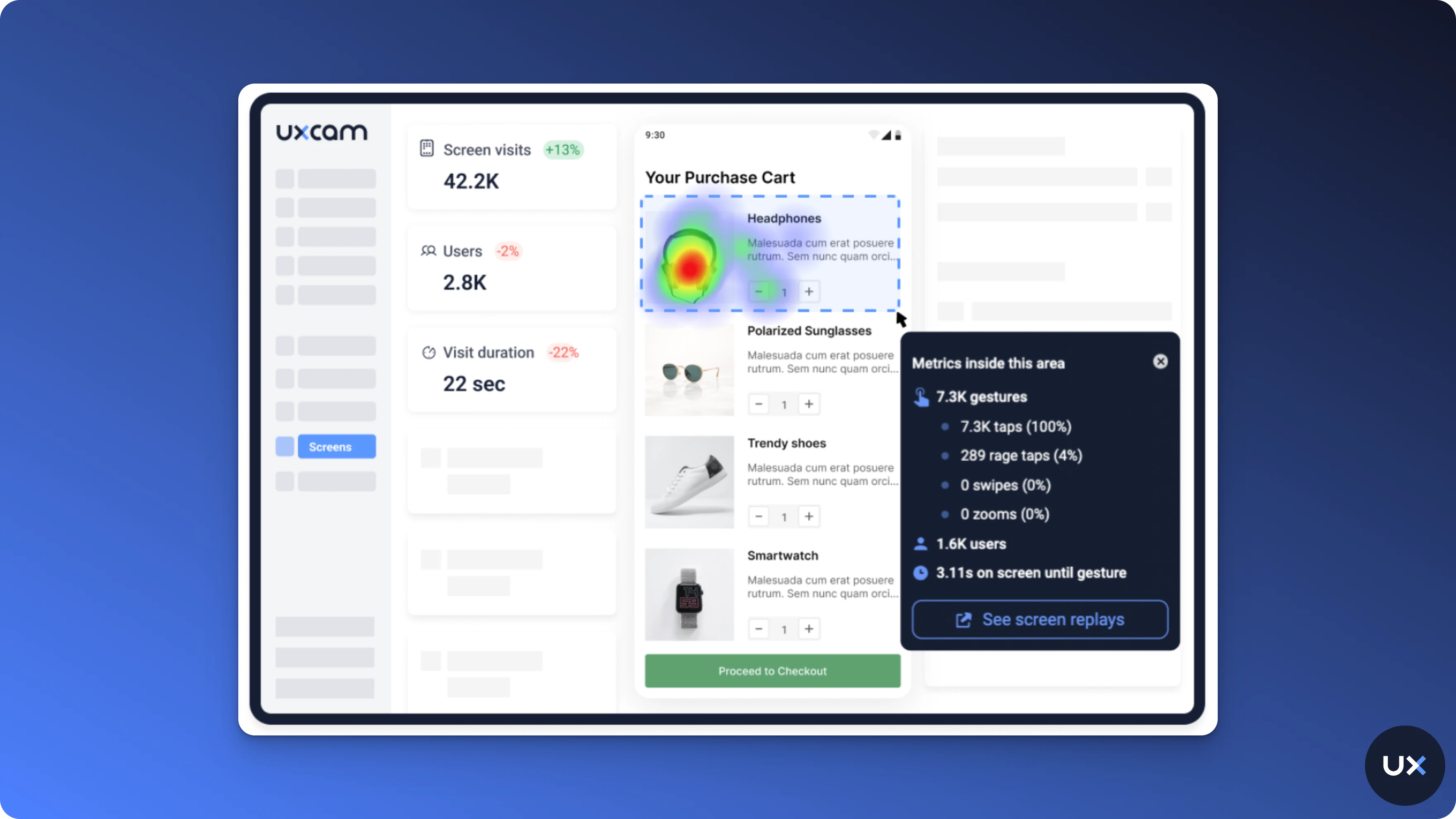
Turn app insights into action with UXCam
We've explored the best mobile app tracking tools to help you analyze user behavior and optimize your app’s performance. Understanding your users' actions is essential for improving engagement and retention, and UXCam provides a comprehensive solution.
UXCam combines session replays, heatmaps, and funnel analysis to offer deep insights into user interactions. With its easy setup and powerful features, it helps teams quickly identify pain points and optimize the user journey. Try UXCam for free today to start improving your app today.
FAQ
How do mobile app tracking tools help improve user retention?
By identifying friction points in the user journey, mobile app tracking tools help you optimize features and user flows. This leads to a smoother experience, reducing drop-offs and increasing retention over time.
Can mobile app tracking tools impact app performance?
The right mobile app tracking tool, like UXCam, has minimal impact on performance. With lightweight SDKs, it ensures that analytics do not slow down your app, providing valuable insights without compromising user experience.
How do I choose the right mobile app tracking tool?
Consider your app’s goals, the features you need, your budget, and the level of insight required. Tools like UXCam are ideal for in-depth user behavior analysis, while tools like Firebase are best for basic tracking and integration with Google services.
Why is UXCam the best choice for mobile app tracking?
UXCam offers a complete solution for mobile app tracking, combining qualitative and quantitative data to provide actionable insights. It excels in session replays, heatmaps, and automatic event capture, making it easy to optimize user journeys.
Related Articles
Top 11 Analytics Mobile App Analytics Tools
How to measure, analyze, and reduce app churn
Android Analytics: Top 8 Tools
4 Key Points That Matter When Comparing Mobile Analytics
The Ultimate Guide to Mobile App KPIs
11 Essential Mobile SDKs That Will Improve Your App
AUTHOR

Jonas Kurzweg
Product Analytics Expert
UX, marketing & product nerd. Coffee enthusiast. Working at UXCam.
What’s UXCam?
Related articles
Curated List
Top 19 Mobile App Analytics Tools in 2026
Discover the top mobile analytics tools in 2026. Compare features, pricing, and reviews to choose the right platform for app tracking, behavioral insights, and data-driven...

Jonas Kurzweg
Product Analytics Expert
App Analytics
Mobile App Tracking: Practical Guide & Best Tools [2026]
The best tracking tools for mobile...

Jonas Kurzweg
Product Analytics Expert
App Analytics
Best Android App Analytics Tools in 2026
Discover the top 8 Android analytics including UXCam, Firebase, and Flurry Analytics. Compare features, pricing, and platforms...

Annemarie Bufe
Product Analytics Expert
